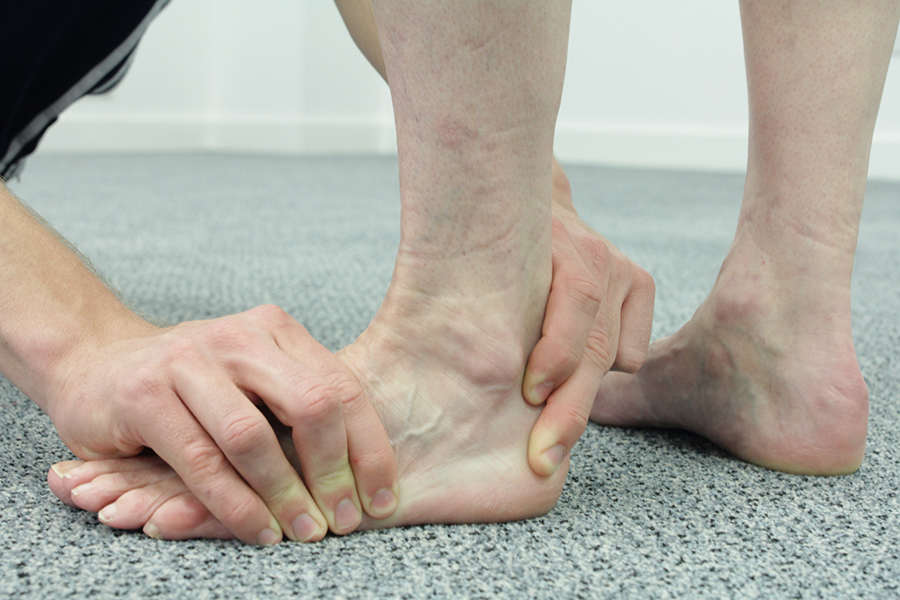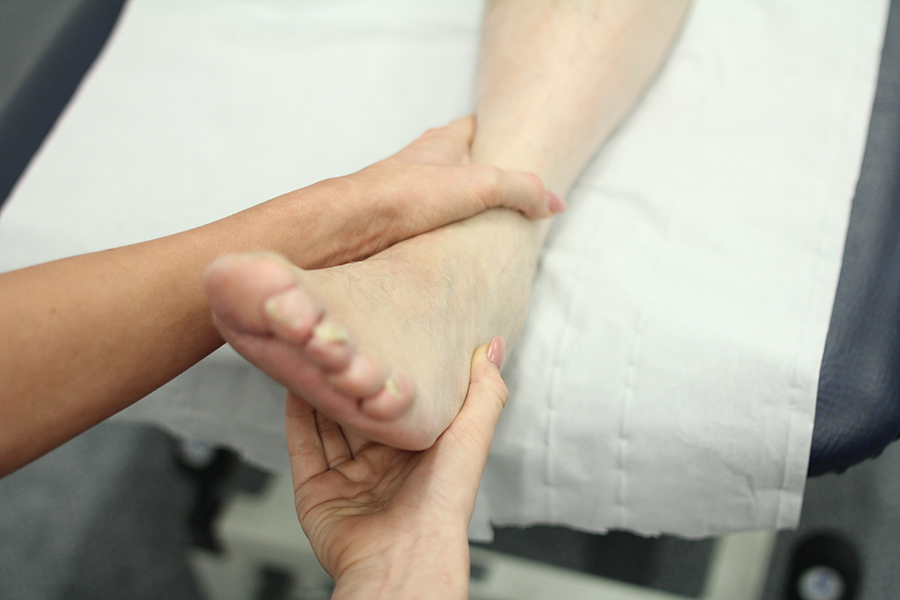Peroneal tendinopathy
Peroneal tendinopathy is a cause of pain on the lower outer leg, and/or ankle, and/or foot. The pain is due to trauma or inflammation to the peroneal tendons. Poor foot posture and overuse are the main cause of peroneal tendinopathy.
Peroneal tendinopathy is an umbrella term given to pain, inflammation or injury to the peroneal tendons. The peroneal tendons run from the two peroneal muscles (peroneus longus and peroneus brevis) that are positioned on the outside of the leg on the fibula, which is the smaller of the two leg bones. The peroneal tendons then course around the outside of the ankle and attach at the foot.
Peroneal tendinopathy can be either chronic (long lasting) or acute (occurs suddenly) and may be the result of either inflammation or damage to the tendon.

Peroneal tendinopathy is most frequently observed in athletes such as runners or dancers, particularly those who have a previous history of ankle instability as a result of frequent sprains to the ankle. Other causes of peroneal tendinopathy include:
The signs and symptoms of peroneal tendinopathy may include the following:
One of our podiatrists here at Chiropody.co.uk will diagnose peroneal tendinopathy based on a thorough history, the signs and symptoms and an examination of the foot, ankle and peroneal tendons.
The benefits that can be achieved following assessment and treatment at Chiropody.co.uk for peroneal tendinopathy include the following:

Podiatry for peroneal tendinopathy would involve a thorough history, your own personal account of the problem and an examination of the peroneal tendons in order to replicate the symptoms and to locate the source of pain. If poor foot posture is contributing your painful symptoms then you may be referred for a biomechanical assessment in order to correct the poor foot posture and reduce any pain.
Upon the diagnosis of peroneal tendinopathy one or more of the following treatments may be recommended:
Peroneal tendinopathy is an umbrella term for pain, injury or inflammation of one or both ofthe peroneal tendons. The peroneal tendons are on the outside of the lower leg, they course around the outside of the ankle and attach at the foot.
The pain associated with peroneal tendinopathy can be either chronic or acute. Typically it is athletes who have a history of previous ankle injury that are most at risk of peroneal tendinopathy, however anybody can get the condition due to, for example, sudden trauma, over-use and poor foot posture.
If you think you have peroneal tendinopathy one of our podiatrists will be able to help you.
To arrange an assessment with one our podiatrists please email office@chiropody.co.uk or call 0330 088 4222.
What is peroneal tendinopathy?
Peroneal tendinopathy is an umbrella term given to pain, inflammation or injury to the peroneal tendons. The peroneal tendons run from the two peroneal muscles (peroneus longus and peroneus brevis) that are positioned on the outside of the leg on the fibula, which is the smaller of the two leg bones. The peroneal tendons then course around the outside of the ankle and attach at the foot.
Peroneal tendinopathy can be either chronic (long lasting) or acute (occurs suddenly) and may be the result of either inflammation or damage to the tendon.

What causes peroneal tendinopathy?
Peroneal tendinopathy is most frequently observed in athletes such as runners or dancers, particularly those who have a previous history of ankle instability as a result of frequent sprains to the ankle. Other causes of peroneal tendinopathy include:
- Sudden trauma
- Over-use
- An inversion injury to the ankle (going 'over' on the ankle)
- Misalignment of the ankle
- Poor foot posture (e.g. over-pronation)
- Tight calf muscles
What are the signs and symptoms of peroneal tendinopathy?
The signs and symptoms of peroneal tendinopathy may include the following:
- Tenderness and pain on the outside of the ankle. The pain is worse upon activity and when palpated
- Pain when peroneals are stretched (inverting the foot so that the toes point towards the opposite leg)
- Pain when the foot is everted against resistance
- Heat
- Redness
How is peroneal tendinopathy diagnosed?
One of our podiatrists here at Chiropody.co.uk will diagnose peroneal tendinopathy based on a thorough history, the signs and symptoms and an examination of the foot, ankle and peroneal tendons.
Benefits of podiatry for peroneal tendinopathy
The benefits that can be achieved following assessment and treatment at Chiropody.co.uk for peroneal tendinopathy include the following:
- Decrease in muscle tightness
- Increase in muscle strength
- Decrease in pain
- Decrease in inflammation
- Improvement in lower limb mechanics

What would podiatry for peroneal tendinopathy involve?
Podiatry for peroneal tendinopathy would involve a thorough history, your own personal account of the problem and an examination of the peroneal tendons in order to replicate the symptoms and to locate the source of pain. If poor foot posture is contributing your painful symptoms then you may be referred for a biomechanical assessment in order to correct the poor foot posture and reduce any pain.
Upon the diagnosis of peroneal tendinopathy one or more of the following treatments may be recommended:
- Rest
- Ice
- Anti-inflammatory advice
- Orthotics
- wedges
- Stretching Programmes
- Acupressure
- Manipulation / mobilisation
- Massage
- Myofascial release
- Soft tissue mobilisation
- Trigger point therapy
- Strapping
Summary
Peroneal tendinopathy is an umbrella term for pain, injury or inflammation of one or both ofthe peroneal tendons. The peroneal tendons are on the outside of the lower leg, they course around the outside of the ankle and attach at the foot.
The pain associated with peroneal tendinopathy can be either chronic or acute. Typically it is athletes who have a history of previous ankle injury that are most at risk of peroneal tendinopathy, however anybody can get the condition due to, for example, sudden trauma, over-use and poor foot posture.
If you think you have peroneal tendinopathy one of our podiatrists will be able to help you.
To arrange an assessment with one our podiatrists please email office@chiropody.co.uk or call 0330 088 4222.
Save 5% by booking an appointment online.

Find your nearest clinic
We have clinics located throughout the North West. We also provide a home visit service.
Find out more »

No waiting lists!
Tired of waiting for treatment? Be seen by a podiatrist today!
Find out more »

Not sure how we can help?
Speak to a podiatrist to find out how we can help. Call us on 0330 088 4222.
Find out more »
We work with:

Individuals

Organisations

Health professionals
Get in Touch!
0330 088 4222
If you would like to speak to one of our specialists then please complete this form.
We are open 7 days a week








